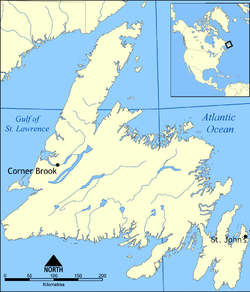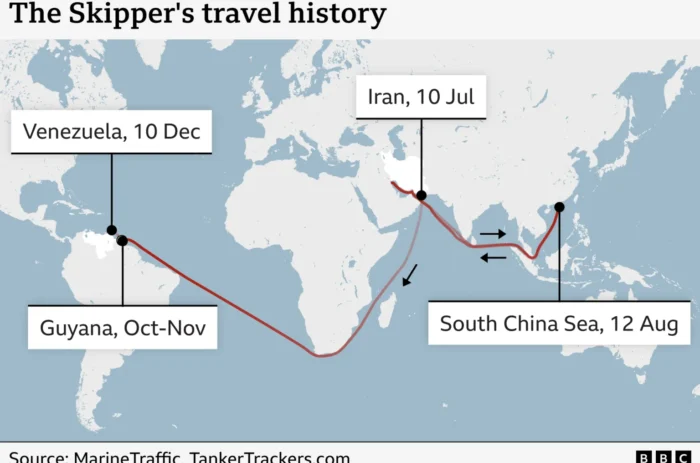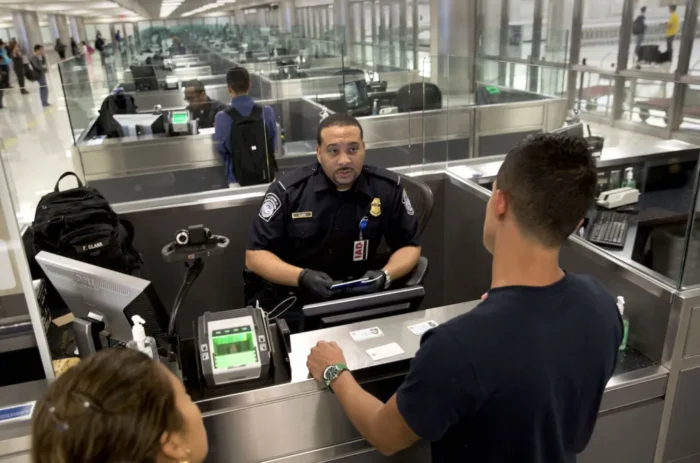redo Jump to...
print Print...
(by Rob Gillies, YahooNews.com) GANDER, Newfoundland (AP) — To hear something nice about 9/11, talk to “the plane people,” the passengers who wound up on the island of Newfoundland that day because U.S. airspace was shut.
Talk to Laura Louie about the overwhelming kindness she and her two small daughters experienced in this distant corner of Canada, briefly transformed by a twist of history into an international aviation hub.
“We were completely taken care of,” she remembers. “For everyone else, 9/11 has a heavy connotation. But for me it was when I was reminded what humanity is.”
Or listen to Monica Burke, a 44-year-old emergency dispatcher from Seattle: “Our whole world was in chaos. We didn’t even know where we were except that we were in some weird time zone in Canada. I didn’t know when I was getting home, but these people basically put their lives on hold. I mean, their kids couldn’t go to school because we were using the schools as shelters.
“Bus drivers came off strike to drive us. Pharmacists came to the shelters and said ‘What do you need?’ and nobody asked for money. It’s pretty incredible that they were able to respond like that, especially with short notice.”
Ten years later, that huge, comforting hug of Gander, Newfoundland still warms the memories of the 6,600 passengers who descended without warning on the town of 10,000. Many of them have made deep friendships with the islanders who cared for them, and some will travel here for the 10th anniversary commemorations.
Across a distance of 3,000 miles from the Pacific to Atlantic, Monica Burke has stayed in regular phone and email contact with Beulah Cooper, the woman who opened her home to her as the horror of 9/11 sank in. She visited her on the first anniversary, and is returning for the 10th.
Cooper, now 70, keeps a large collection of thank-you letters from the many people she helped in different ways.
Among those she comforted are Dennis and Hannah O’Rourke, a … couple whose New York firefighter son, Kevin, went missing at the World Trade Center.
He died. The O’Rourkes have remained friends with Cooper and have been back to Gander, whose people Hannah O’Rourke feels eternally indebted to. “They are so full of love and kindness and they can’t do enough for you,” she said. “I’ll never forget it. Beulah was a mother figure.”
Of the hundreds of flights blocked that day, more than 200 were diverted to Canada, with no warning, recalls David Collenette, transport minister.
“They shut down U.S. airspace, period, and we had to pick up the pieces. I don’t fault them for that. It was an absolute tragedy,” Collenette told The Associated Press. “There was no request. We were informed that the United States had closed its airspace to all incoming traffic, all planes were grounded in the United States, and that any planes flying into the U.S. airspace would be shot down. Frankly it was as brutal as that.”
He said that despite intelligence reports about more airborne terrorists possibly approaching, he had to let the aircraft in, or else they might attempt unauthorized landings or crash into the Atlantic. “As it was, we landed 33,000 people in a matter of a few hours.”
Norman Mineta, then U.S. transportation secretary, had a different recollection of the day.
“After I closed U.S. airspace I realized that we’ve got these planes coming in from Europe and Asia and I then called David and I said ‘Hey David, we need your help,'” Mineta said, asking Collenete if Canada could take the incoming planes.
“He put me on hold and within a minute or so he said, ‘We’ll take them all,'” Mineta told the Associated Press in a telephone interview.
Mineta said he was surprised that Collenette didn’t mention their conversation to the AP, but added that Canada “did a great service” for the U.S. that day.
The Canadians shunted the traffic away from Toronto and Montreal to the eastern seaboard, and obscure, little used Gander got to relive its glory days as a stopover point for trans-Atlantic aviation before long-distance flights became possible. Built in 1938 in anticipation of the coming world war, it had the world’s longest runway, and on 9/11 it was the second busiest, taking in 38 flights to Halifax, Nova Scotia’s 47.
Flight crews quickly filled Gander’s hotels, so passengers were taken to schools, fire stations, church halls. The Canadian military flew in 5,000 cots. Stores donated blankets, coffee machines, barbecue grills. Unable to retrieve their luggage, passengers became dependent on the kindness of strangers, and it came in the shape of clothes, showers, toys, banks of phones to call home free of charge, an arena that became a giant walk-in fridge full of donated food.
Once all the planes had landed or turned back to Europe, Gander’s air traffic controllers switched to cooking meals in the building nonstop for three days.
“We went from air traffic controllers to cooks and cleaners of pots and pans,” said Dan O’Brien, a supervisor with Nav Canada, the civil air navigation service, who brought passengers home to shower.
Doug Dillon switched from controlling traffic to delivering medical prescriptions to passengers in need. His father, Des, led the efforts for the Canadian Red Cross, and his brother and mother joined in the efforts to make the guests comfortable.
So did neighboring communities such as Gambo and Lewisporte.
“It still makes me cry when I think about it. They were incredible,” said Barbara Groh-Wahlstrom, who stayed with the Salvation Army in Gambo and met her future husband there. “They had people working in the kitchen 24 hours a day and it turned out to be for five days. We were 187 passengers and they fed us three meals a day. They celebrated us like we were five-star guests. They were so full of love.”
Diane Kirschke, a Texan, met Nick Marson, an Englishman. They married, and honeymooned in Newfoundland on the first anniversary of 9/11.
Louie, who is 46 and now married to actor Woody Harrelson, remembered a family across the street who saw her daughters aged 5 and 8, and invited them into their home, let them play for two hours, and offered them a change of clothes.
“I couldn’t believe it,” she said by phone. “I mean, we live in Hawaii where aloha is pretty present, but I felt so much aloha there, so welcoming, so trusting.”
Des Dillon, Gander Mayor Claude Elliott, Beulah Cooper are among those being honored in Washington, D.C. at a ceremony on [September 8th]. Canadian Prime Minister Stephen Harper will attend and President Obama has been invited.
A piece of a steel beam from the former World Trade Center, donated by the Bethpage Volunteer Fire Department on Long Island, will be unveiled in Gander on Sept. 11.
One of the Americans coming back is Shirley Brooks-Jones. She was so overwhelmed by the experience of 2001 that as her plane left Gander, she told her fellow passengers over the cabin address system that she wanted to set up a scholarship fund for students in Lewisporte, where they stayed.
The Lewisporte area Flight 15 scholarship fund is now worth close to $1.5 million and has put 134 students through school. Brooks-Jones has been back 20 times, to present the scholarships every June and to attend each anniversary.
“Since nobody would take any money from us there we wanted to do something so that those people there would never forget what they had done for us,” she said by phone from Dublin, Ohio. “They just put their lives on hold to take care of the plane people.”
AP Researcher Monika Mathur contributed to this report from New York.
Copyright ©2011 Associated Press. All rights reserved. Reprinted here for educational purposes only. The information contained in this AP news report may not be published, broadcast, rewritten, or redistributed without the prior written authority of the Associated Press. Visit news.yahoo.com/unlikely-place-human-face-9-11-154006570.html for the original post.
Questions
NOTE: Today’s Daily News Article is a human interest story. Human interest stories differ from the regular news – they are sometimes referred to as “the story behind the story.“
The major news articles of the day tell of important happenings. Human interest stories tell of how those happenings have impacted the people or places around the story.
1. Where is Newfoundland located?
2. Why did 6,600 passengers (and crew) wind up in Gander, Newfoundland for 3 days?
3. List at least 3 ways the citizens of Gander (and neighboring Lewisporte and Gambo) helped the stranded passengers.
4. How did some of the passengers show their appreciation to the people of Newfoundland?
5. How does this article encourage you?
Background
DAVID COLLENETTE:
- David Collenette was a Canadian politician from 1974 to 2004, and a member of the Liberal Party of Canada.
- In 1997 he was appointed Minister of Transport.
- On September 11, 2001, the Federal Aviation Administration (FAA) closed down U.S. airspace after a series of terrorist attacks on the World Trade Center and the Pentagon.
- After the FAA closed down U.S. airspace, Collenette acted swiftly and shut down Canadian airspace in order to take in diverted U.S.-bound international flights, launching Transport Canada’s Operation Yellow Ribbon.
- Ultimately, 255 flights carrying 44,519 passengers were diverted to 15 Canadian airports. (from wikipedia)
GANDER, NEWFOUNDLAND (excerpted from wikipedia)
- Gander was chosen for the construction of an airport in 1935 because of its location close to the northeast tip of the North American continent. In 1936, construction of the base began, and the town started to develop.
- During the Second World War, as many as 10,000 Canadian, British and American military personnel resided in Gander. The area became a strategic post for the Royal Air Force Air Ferry Command, with approximately 20,000 American- and Canadian-built fighters and bombers stopping at Gander en route to Europe.
- After the war, the airbase became a civilian airport, and the location of the town was moved a safe distance from the runways. Construction of the present town site began in the 1950s, and the present municipality was incorporated in 1958.
- After the Second World War, the town grew as the airport was used as a refueling stop for transatlantic flights, earning its name “Cross-roads of the world,” as nearly all overseas flights had to stop there before crossing the Atlantic.
- Gander International Airport played an integral role in world aviation in the hours immediately following the September 11, 2001, attacks when all of North America’s airspace was closed by the Transport Canada and the U.S. Federal Aviation Authority (FAA).
- As part of Operation Yellow Ribbon 39 transatlantic flights bound for the United States were ordered to land at the airport—more flights than any Canadian airport other than Halifax International. (Vancouver International received the most passengers, at 8,500.)
- More than 6,600 passengers and airline crew members, equivalent to 66 percent of the local population, found themselves forced to stay in the Gander area for up to three days until airspace was reopened and flights resumed.
- Residents of Gander and surrounding communities volunteered to house, feed, and entertain the travelers in what became known as Operation Yellow Ribbon.
- This was largely because Transport Canada and NAV CANADA asked that transatlantic flights avoid major airports in central Canada, such as Lester B. Pearson in Toronto and Montréal-Dorval.
Resources
Watch a video news report on Gander at:
news.yahoo.com/video/canews-22424922/gander-remembers-the-9-11-plane-people-26447415.html
Daily “Answers” emails are provided for Daily News Articles, Tuesday’s World Events and Friday’s News Quiz.




